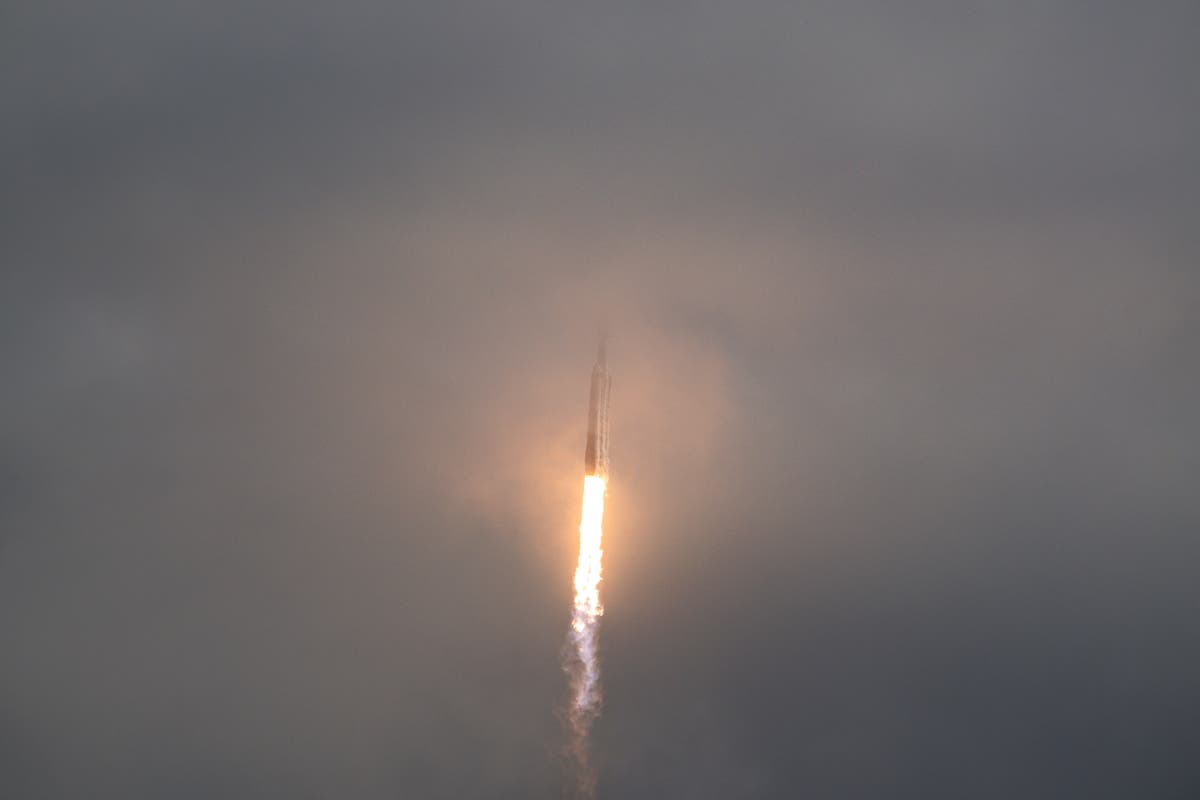Temporary holes in the Earth’s upper atmosphere made by SpaceX rockets are creating bright red aurora-like formations in the sky and may be signs of unrecognised problems, scientists said.
While red light has been seen during previous rocket launches, a new aurora-like phenomenon spotted in the night sky could potentially cause unknown problems for astronomy and communication.
Scientists said the impact of the formations through SpaceX launches is still being evaluated.
These “SpaceX auroras”, unlike the streaks in the sky from previous launches, are “red, roughly spherical, and visible to the naked eye for as much as 10 minutes at a time,” according to Spaceweather.com.
They are not exactly auroras, but bright red balls caused by SpaceX rockets burning their engines in the ionosphere, scientists have pointed out.
“We are seeing 2 to 5 of them each month,” said Stephen Hummel from the McDonald Observatory in Texas.
Unlike the previously observed red streaks from rocket launches, the SpaceX auroras are caused by rockets or their stages coming down.
In the case of an example spotted in November, Dr Hummel said a red ball was caused by the second stage of the Falcon 9 rocket burning its engines in order to de-orbit and return to Earth, creating an ionospheric hole as it descended.
“We first noticed these SpaceX de-orbit burns over the McDonald Observatory in February 2023,” physicist Jeff Baumgardner told Spaceweather.com.
During the rocket’s descent, scientists said it burns nearly 180kg of exhaust gasses – mostly water and carbon dioxide – near the edge of the ionosphere where a significant hole could have been made.
Scientists are concerned that as SpaceX plans more launches in the future, the frequency of these red glows in the sky could increase, likely interfering with astronomical observations.
“Their impact on astronomical science is still being evaluated,” Dr Hummel said.
SpaceX did not immediately respond to The Independent’s request for comment.
Earlier studies have shown that an increasing number of rocket launches across the world are punching holes in the Earth’s ionosphere – a layer of the Earth’s upper atmosphere consisting of a sea of electrically charged particles floating at about 80-650km above the surface.
Rockets and their exhaust flames tend to alter the process by which charged particles form in this dynamic layer around Earth, which makes radio communications on Earth possible.
The water and carbon dioxide sprayed out by fast moving rockets towards the edge of space can decrease the process by which this layer forms by over two thirds, studies have shown.
Holes popped in the ionosphere can also excite gas molecules in its upper layer and trigger streaks of bright, aurora-like red light, scientists said.
Such holes are identified by their characteristic red colour due to oxygen ions in the ionosphere reacting with electrons from the rocket exhaust.
For instance, a SpaceX Falcon 9 rocket launch in July carrying Starlink satellites popped a hole above Arizona that made the sky briefly appear red.
Then in September, a US Space Force rocket launch caused an ionospheric hole above California, causing the sky to glow with a faint red hue.

Dr. Thomas Hughes is a UK-based scientist and science communicator who makes complex topics accessible to readers. His articles explore breakthroughs in various scientific disciplines, from space exploration to cutting-edge research.








